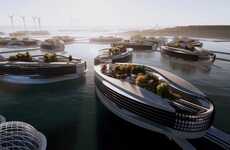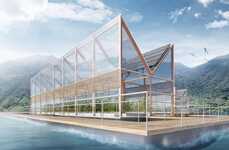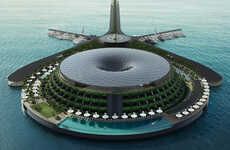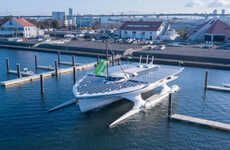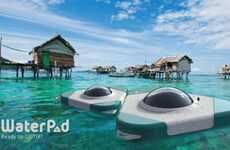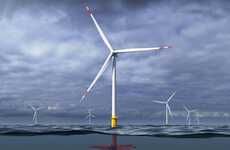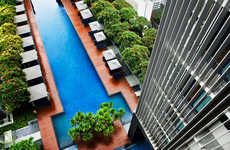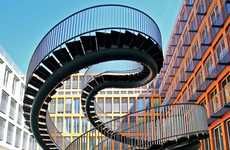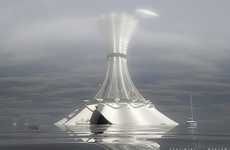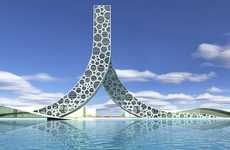
The Green Float Concept Uses Renewable Energy To Float
Conceived by Japanese Technology firm Shimizu, the Green Float concept involves a series of mini floating cities that house between 10,000 to 50,000 people. These floating cities harness hi-tech green technology and involve a number of cells capable of reducing carbon emissions by 40 per cent. These cells are freed to float on the Pacific Ocean and join together to form cities and towns.
Each individual cell involves huge towers surrounded by grassland and forests, built from super-light alloys derived from magnesium in seawater.
The concept was also displayed at a university conference and Shimizu is expecting to create the first cells by the year 2025.
Each individual cell involves huge towers surrounded by grassland and forests, built from super-light alloys derived from magnesium in seawater.
The concept was also displayed at a university conference and Shimizu is expecting to create the first cells by the year 2025.
Trend Themes
1. Floating Cities - Opportunity for developing sustainable and self-sufficient communities on the water.
2. Green Technology - Innovations in renewable energy and eco-friendly infrastructure for floating cities.
3. Carbon Emission Reduction - Advancements in technology to significantly reduce carbon emissions in urban environments.
Industry Implications
1. Real Estate - Opportunities for creating and selling properties in the emerging market of floating cities.
2. Renewable Energy - Growing demand for sustainable power solutions to meet the energy needs of floating cities.
3. Architecture and Engineering - Innovative design and construction projects for building floating communities and infrastructure.
4.1
Score
Popularity
Activity
Freshness


